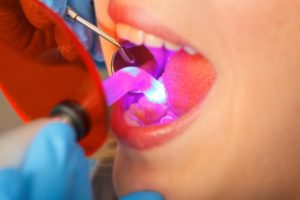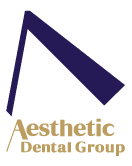
Dental bonding can be broken down into two types of material. The first is called direct composite. Direct composite is used for a wide range of restorative methods, but the most common use is in cosmetics. Sometimes a chipped or broken tooth is not very painful, but you would like it to look like it used to. Dental bonding is the perfect material for this. The other type of dental bonding is known as adhesive bonding. Adhesive bonding is used to firmly attach prosthetics like crowns, bridges, and veneers to the tooth.
How Direct Composite and Adhesive Bonding Are Used
Direct composite is a viscous material that is easily shaped which makes it great for restoring the shape of a tooth. When getting direct composite, we’ll clean your tooth so it has a good surface to bond to. Afterwards, we will place some of the direct composite onto the damaged tooth and carefully shape it. Once the correct shape is achieved, we use an ultraviolet light to cure it making it hard and durable. This method is best used on molars that have been damaged.
Adhesive bonding can’t be shaped in the same way direct composite can be shaped. However, it provides a very strong bong between the tooth and a prosthetic. Your tooth will be cleaned similarly to when applying direct composite, however, there are many different cleaning methods available depending on the situation. Once the tooth is cleaned, the adhesive will be placed on your tooth than the prosthetic on top of that.
At our office, we use both types of dental bonding and are very familiar with how they work, if you’re interested in learning mores, give us a call. We can provide more information.
